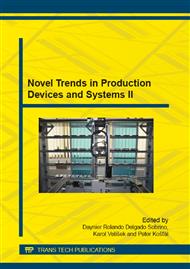p.247
p.256
p.261
p.267
p.273
p.279
p.285
p.293
p.299
Finite Element Analysis of Laminating Tools for Automotive Interior Parts
Abstract:
This paper presents a method of finite element modeling and analysis used in the process of development of laminating tools of automotive interior parts. In this research, the automotive interior part considered for analysis is a center console part covered with leather. This part is subjected to concentrated loading and the stress variation within the complete assembly is determined. Also, due to the fact that the leather is stretched and glued to the plastic part using heat transfer between two molds, a thermal assessment is necessary. The results, in the form of deformations and tensions, and conclusions of both analyses will demonstrate the need to use this method in the development of laminating tools of automotive interior parts.
Info:
Periodical:
Pages:
273-278
Citation:
Online since:
December 2014
Authors:
Price:
Сopyright:
© 2014 Trans Tech Publications Ltd. All Rights Reserved
Share:
Citation:


